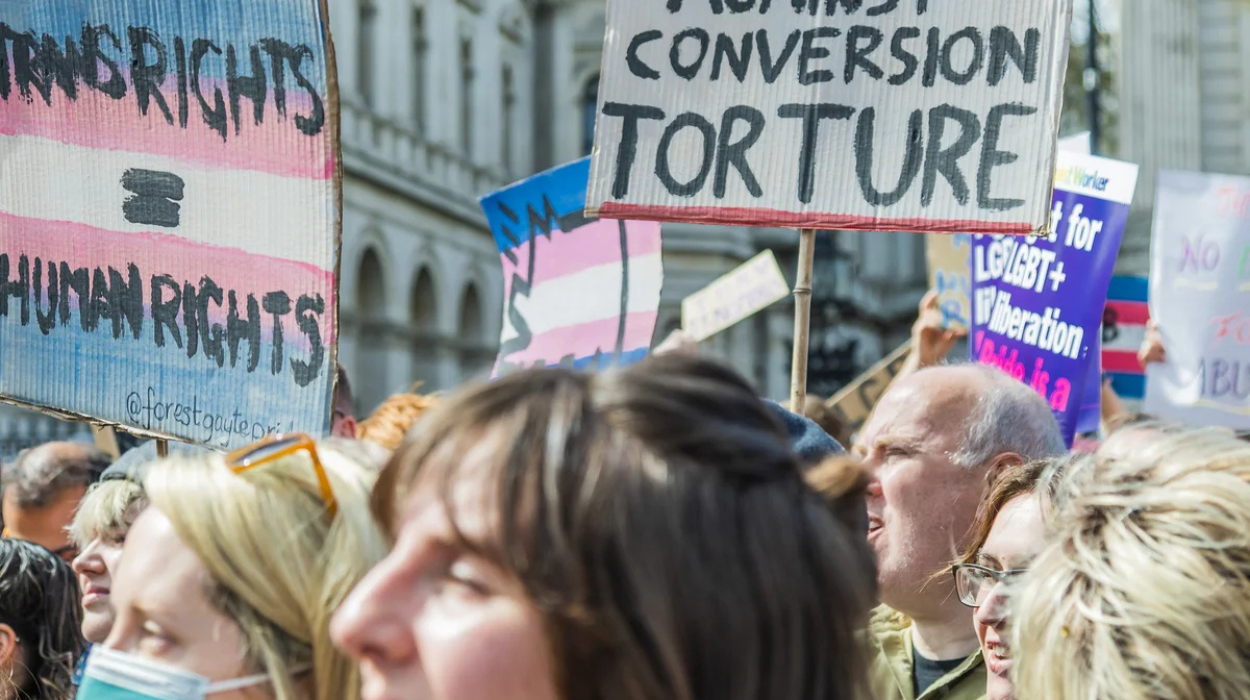Reform UK’s emergence as a viable political force is sparking a renewed public conversation about the future of LGBTQ rights in the United Kingdom. The party has put transgender issues front and center with its policy platform in its manifesto and the behavior of councils it oversees in consultation with regulation; this includes both the evolving interpretation of school guidance for LGBTQ students and school guidance about general visibility of LGBTQ communities.
Since laws and public policy impact access to healthcare, schooling, employment protection, and social inclusion, all proposals for reforms deserve scrutiny both in terms of the explicit aims of the proposal and with consideration of the likely practical implications.
What does Reform UK say in its platform
The public policy documents and election materials produced by Reform UK spotlight what they describe as the need to prevent “transgender ideology” from taking root in schools and restore a type of neutrality in public institutions.
The language in the party manifesto includes promises to prevent some types of social transitioning in schools, require teachers and administration to inform parents about potentially consequential gender-related determinations for those under 16, and prevent the objective instruction and awareness of where gender identity fits in primary and secondary education.
The party distinguishes its position on transgender concerns from more traditional LGBT rights like same-sex marriage; polling and party messaging frequently reveal that Reform voters accept civil partnership and marriage equality for same-sex couples while opposing self-identification and gender recognition measures. For both political strategy and legal risk understanding, that difference is very important.
How the party frames its arguments
Reform UK positions its approach on several persistent themes:
Protecting children
The party says that parents need to be informed about any gender-related changes in their children’s lives and that schools shouldn’t be venues for “gender ideology.” Targeted both at parents concerned about classroom content and at voters who view schools as the front line of social reform, this message also appeals to voters.
Public neutrality
Opponents of decorative representation on council buildings aim to have an idea of neutrality, which means being unbiased, by having forbidden flags or visibility of advocacy symbols. Proponents of flag bans are describing their measure now as a return to core priorities.
Legal clarity and safety
The party maintains that legal clarity and the preservation of single-sex spaces call for restrictions on gender identification and recognition—an argument employed by parties across the political spectrum opposing changes to the Gender Recognition Act.
Frame is important since it influences public opinion: policies presented as safeguarding children or as neutrality are more politically appealing than abstract constitutional arguments.
The evidence on likely consequences
To evaluate the effects of Reform UK’s ideas, we have to examine empirical data from health, education, and equality research:
- Health outcomes: Several studies of mental health and general health demonstrate that having social support and access to gender-affirming care helps to alleviate suffering among transgender people and could lower suicide attempts and rates of self-harm. Policies that limit access to care or lower visibility elevate mental health hazards for trans and questioning teenagers. (Public petitions and parliamentary briefings stress the mental health stakes in legal change discussions.)
- Education and security: Blanket prohibitions against talking about gender in schools risk limiting teachers from providing assistance to students going through gender dysphoria. Where correctly used, inclusive pastoral care coexists with protection and parental engagement; harsh limitations drive weak students into solitude. International studies demonstrate that inclusive school policies are linked with better well-being indicators for LGBT students.
- Public services and social cohesion: When removing Pride flags or restricting rights or resources to LGBTQ-themed spaces, this process can informalize, sending a signal to minority groups that they are in some ways unwanted – a symbolic process that could translate into reduced service take-up (e.g., young people seeking less help at libraries or health services). In contrast, advocates argue that councils should not support political positions; in effect, the policy trade-off is between symbolic recognition and a rather narrow interpretation of neutrality.
Political context and public perceptions
Reform UK’s positions need to be understood in the context of shifting public perceptions and political competition in general. The polling indicates that despite overall support for such ideas (e.g., support for same-sex marriage), attitudes about questions of legal gender recognition and self-identification tend to be more divided. Reform has a substantial base that is skeptical about GRCs and gender self-ID; party messages have tried to respond to those concerns while not repudiating older advances to LGB issues entirely.
What supporters say—and why it resonates
Supporters of Reform UK’s thinking argue:
That the party restores common sense – they are bringing parental rights back to schools.
The public institutions should not actively promote campaigns or identities in civic property.
That the reforms are narrowly targeted to “ideology” rather than to individuals’ legal rights.
Such messages resonate in electorates that feel anxiety about achieving rapid cultural change and where voters are particularly preoccupied by schooling, family policy, and their perspective of community cohesion. Political messages that focus on these everyday concerns can be politically powerful.
Potential compromises and other policy options
If the project is about protecting children and clarity in public services, there are many less polarizing alternatives:
- Clear guidance on age-appropriate relationship and sex education that includes safeguarding provisions while allowing for inclusive pastoral care.
- Strong parental engagement policies that also allow for young people’s confidentiality where safeguarding is a concern.
- Civic-space protocols for flags that distinguish between celebratory and campaigning flags as separate from service-information flags, retaining inclusivity and institutional neutrality.
These approaches seek to make space for balancing concerns over parental rights, safeguarding, and community cohesion without creating blanket exclusions that will harm vulnerable people.


